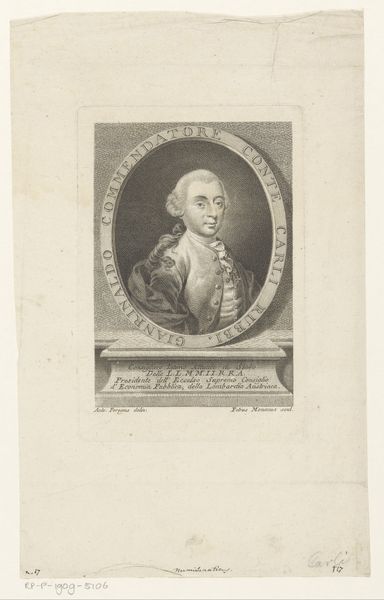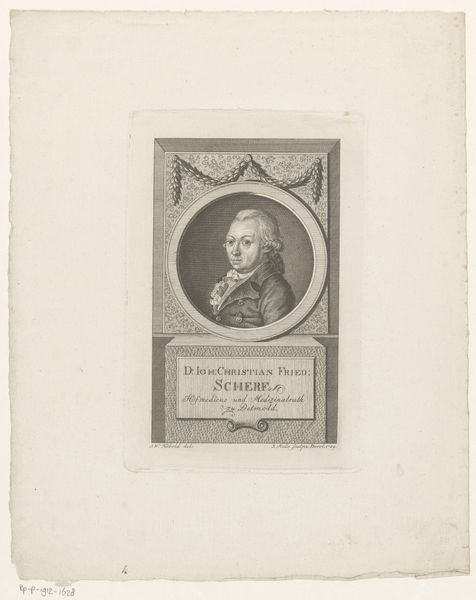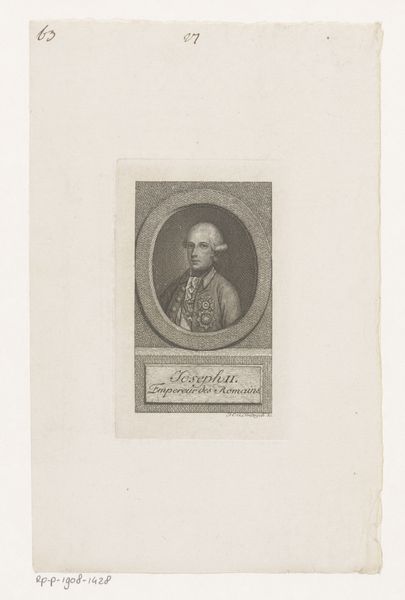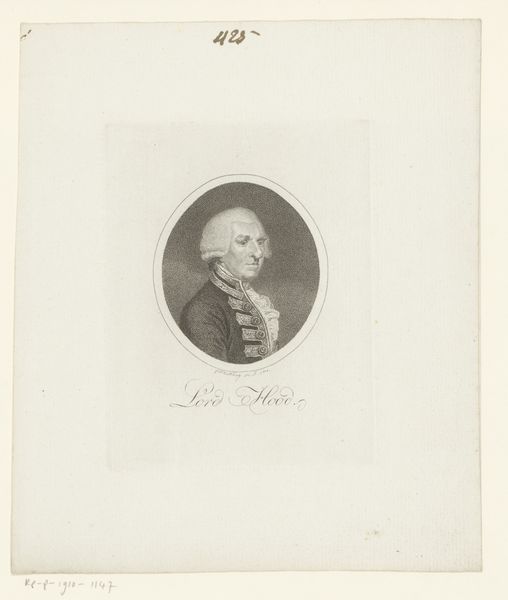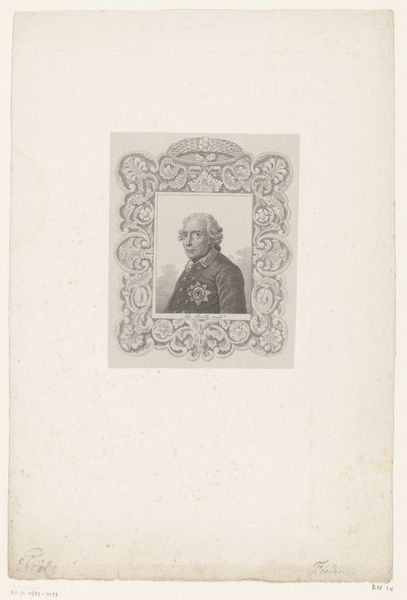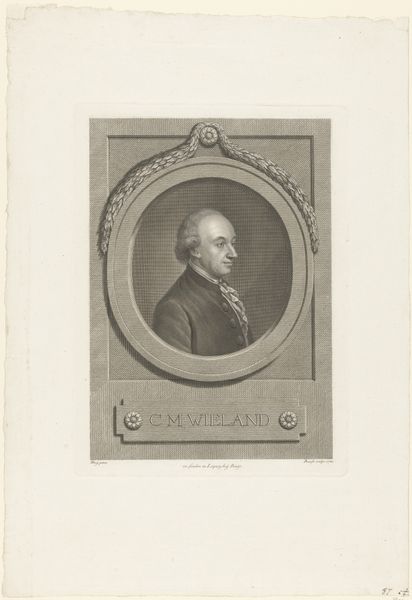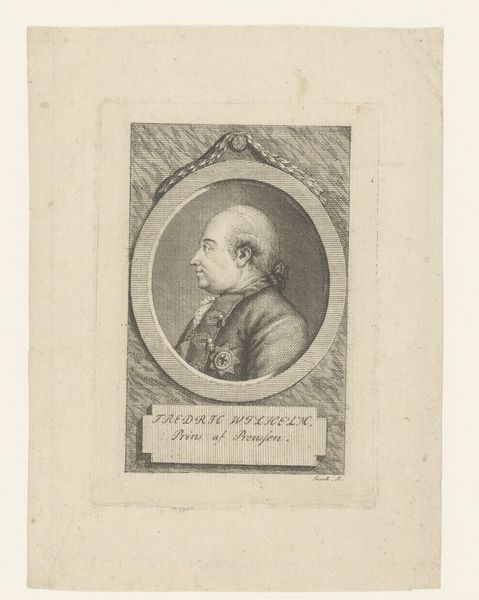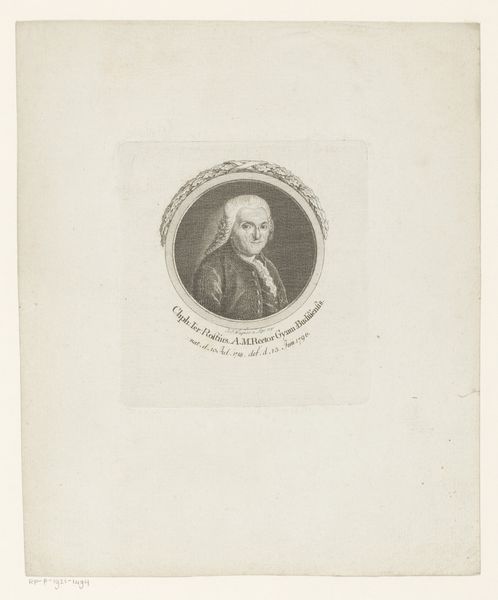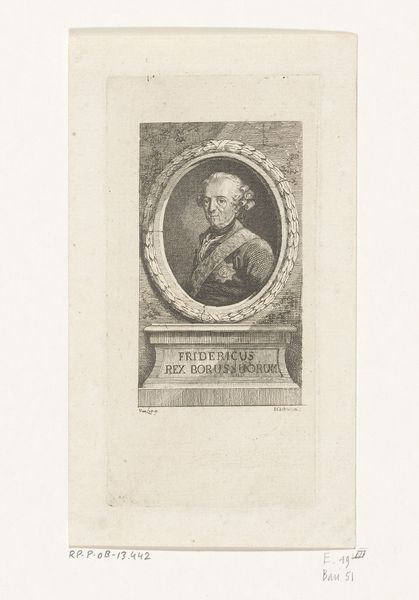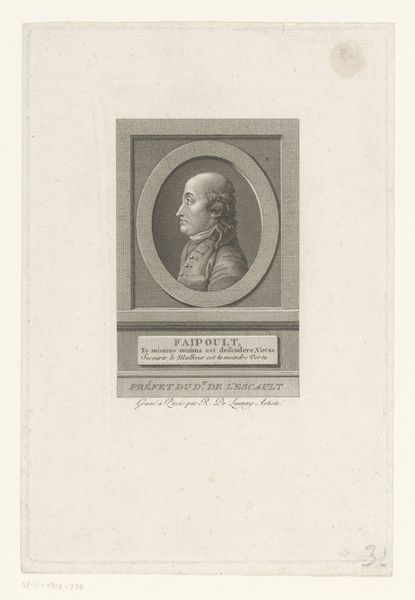
engraving
#
portrait
#
neoclacissism
#
old engraving style
#
history-painting
#
academic-art
#
engraving
#
realism
Dimensions: height 91 mm, width 53 mm
Copyright: Rijks Museum: Open Domain
Editor: Here we have a portrait of Frederik Willem II, King of Prussia. It's an engraving, dating somewhere between 1762 and 1797. There's something rather stoic about the subject; the rigid frame seems to reinforce that formality. What do you see in this piece? Curator: It's easy to see this as a simple portrait, but it’s important to consider the context in which it was made. The late 18th century was a time of immense social and political upheaval. This engraving, with its neoclassical aesthetic, presents Frederick William II as a figure of stability and authority – a direct contrast to the revolutionary fervor sweeping across Europe. Consider the function of royal portraiture generally; it was never really about likeness alone, was it? Editor: So, the portrait isn’t necessarily meant to be an accurate depiction, but a symbol? Curator: Exactly! Think about the power dynamics at play here. Royal portraits were tools to legitimize power and promote an idealized image of the monarch, specifically during the period when the concept of hereditary rule was being directly challenged by Enlightenment ideals and republican movements. This "realism" is very carefully constructed, not neutral. Editor: That makes me think about the engraver's role. Did they have any agency in crafting this image? Curator: That's a fantastic question. While the engraver was likely commissioned and worked within certain constraints, they would have had a role in shaping the king's representation through their technical skill and artistic choices. Think of the very deliberate, sharp lines—they are sending a very particular message. Editor: It’s fascinating to consider the image of power presented, compared to the social tensions brewing at the time. I definitely see the portrait in a new light now. Curator: Absolutely. It reminds us that art isn’t made in a vacuum. Exploring its historical context and intended audience reveals its underlying political and social commentary.
Comments
No comments
Be the first to comment and join the conversation on the ultimate creative platform.

